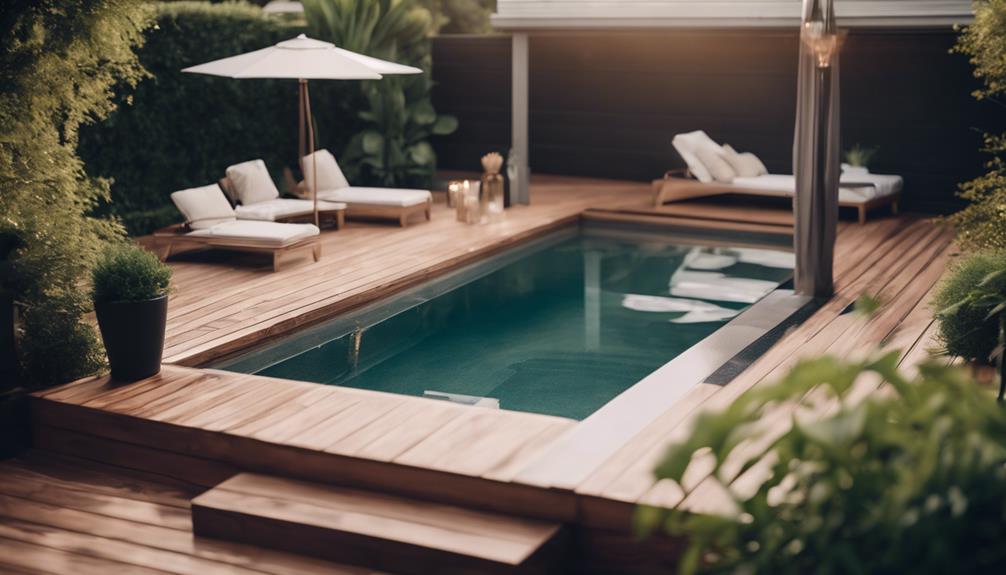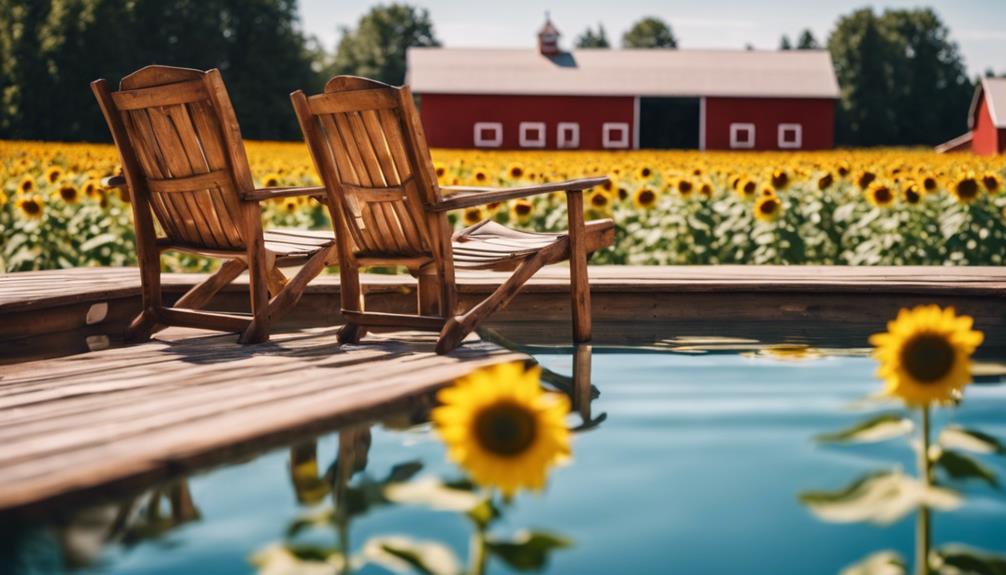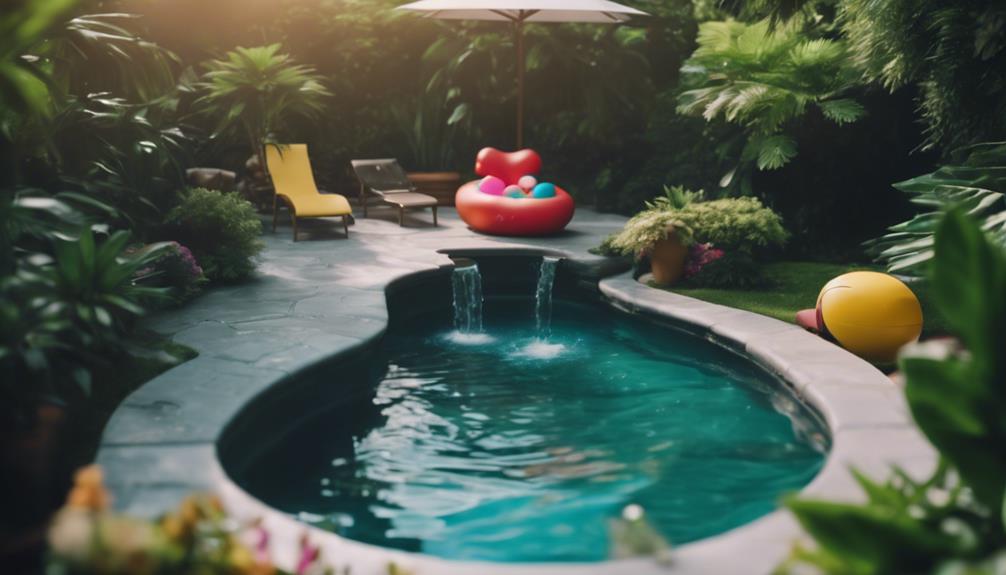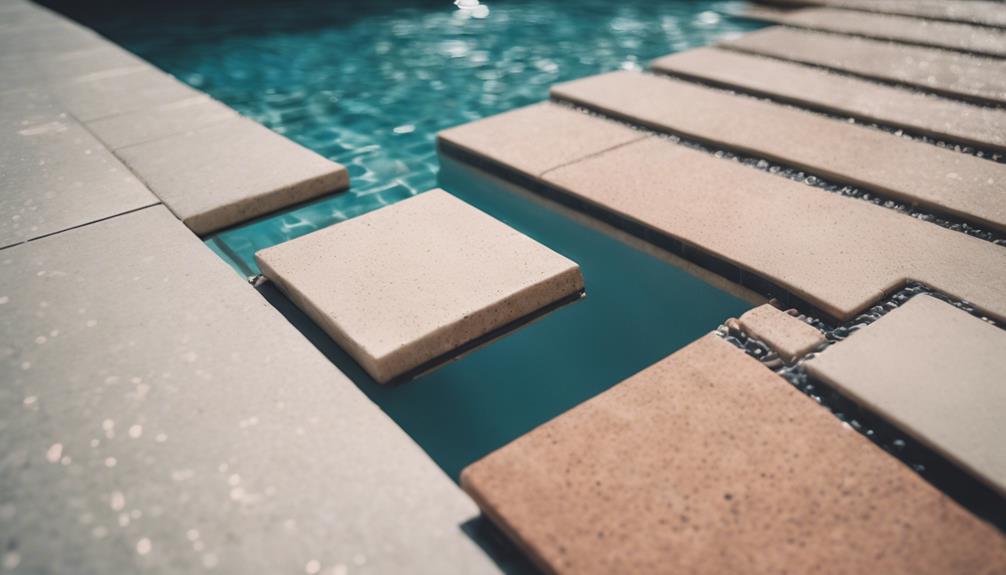After assessing the size of the space following pool removal, consider planning distinct outdoor living areas. Enhance variety with plants, focal points such as trees, and practical features for a space to entertain. Embrace water-efficient landscaping and strive for sustainability by using native plants and rain gardens. Strategically optimize views and privacy. To keep costs in check, repurpose pool materials, choose low-maintenance plants, and embark on DIY projects. Elevate the aesthetics by combining plants, hardscaping, and water features. Create different zones and incorporate lighting for ambiance. By carefully balancing functionality and aesthetics, transform your outdoor space into a beautiful retreat.
Key Takeaways
- Repurpose pool materials creatively for a cost-effective transformation.
- Opt for low-maintenance landscaping to reduce upkeep post-pool removal.
- Design distinct areas for outdoor living and entertainment zones.
- Incorporate sustainable practices like native plants and rain gardens.
- Enhance aesthetics with water features, pathways, and seating areas.
Planning Your New Backyard Landscape
When planning your new backyard landscape after removing a swimming pool, assess the size and shape of your reclaimed space to determine the layout of different zones.
Start by envisioning the yard space as distinct areas for outdoor living, such as seating, dining, and play areas.
To create a vibrant outdoor living space, consider planting a variety of plants to add color and texture. Introduce a focal point like a beautiful tree, sculpture, or fire pit to anchor the design and draw the eye.
For an entertainment area, think about incorporating features like a built-in barbecue, outdoor kitchen, or cozy seating arrangement for gatherings with friends and family.
By carefully planning the layout of your new backyard landscape, you can transform the space into a welcoming oasis that suits your needs and preferences.
Incorporating Functional Outdoor Elements
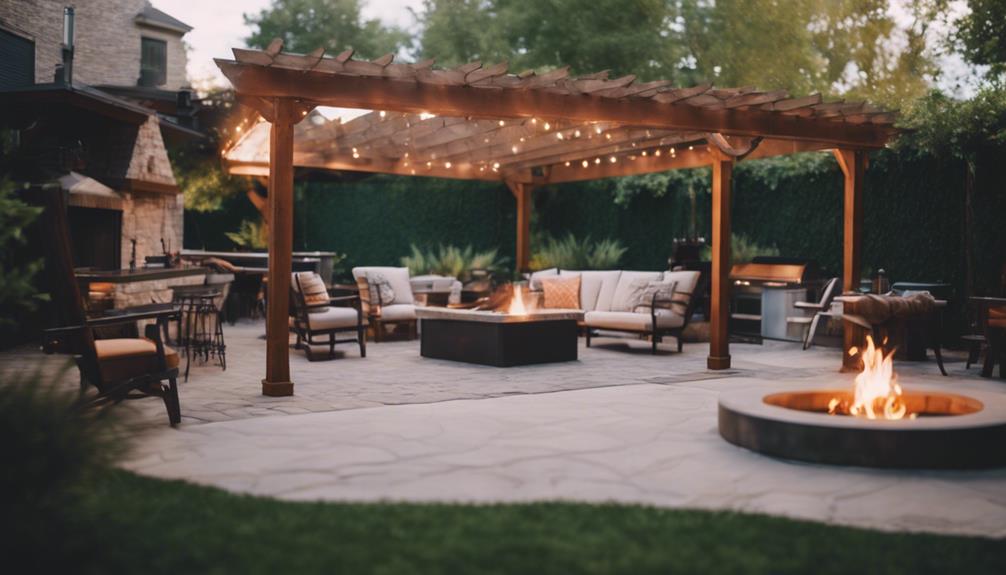
When revamping your outdoor space post-pool removal, consider adding functional elements like outdoor seating options for relaxation and entertaining.
Embracing water-efficient landscaping ideas can help conserve resources while maintaining a lush and inviting atmosphere.
These elements not only enhance the usability of your backyard but also contribute to a sustainable and visually appealing landscape design.
Outdoor Seating Options
To enhance your outdoor seating area after removing a swimming pool, consider incorporating functional outdoor elements like fire pits, water features, and shade structures. Outdoor seating options such as built-in benches, Adirondack chairs, hammocks, and outdoor sofas can provide comfortable lounging spaces for you and your guests. Opt for weather-resistant materials like wicker, teak, or metal when selecting durable outdoor furniture that can withstand various weather conditions. Adding cushions, throw pillows, and outdoor rugs can help create a cozy atmosphere, making your seating area inviting and comfortable.
Proper placement of your outdoor seating is important for optimizing views, sun exposure, and privacy. Position seating areas strategically to make the most of your outdoor space and enhance the overall functionality of the area.
Whether you choose to gather around a fire pit for warmth and ambiance or lounge in the shade of a structure, creating a well-designed outdoor seating area can transform your space into a relaxing retreat.
Water-Efficient Landscaping Ideas
Consider incorporating water-efficient landscaping ideas that integrate functional outdoor elements to create a sustainable and visually appealing outdoor space.
To reclaim space effectively after removing a swimming pool, you can implement the following:
- Rain Gardens: Design a garden bed that captures and filters rainwater, reducing runoff and supporting plant growth.
- Drip Irrigation Systems: Install a system that delivers water directly to the roots of plants, minimizing water waste.
- Native Plants: Choose plants that are well-adapted to the local climate, requiring less water and maintenance.
- Permeable Paving: Use materials that allow water to seep into the ground, preventing puddles and erosion.
Sustainable Practices for Eco-Friendly Landscaping
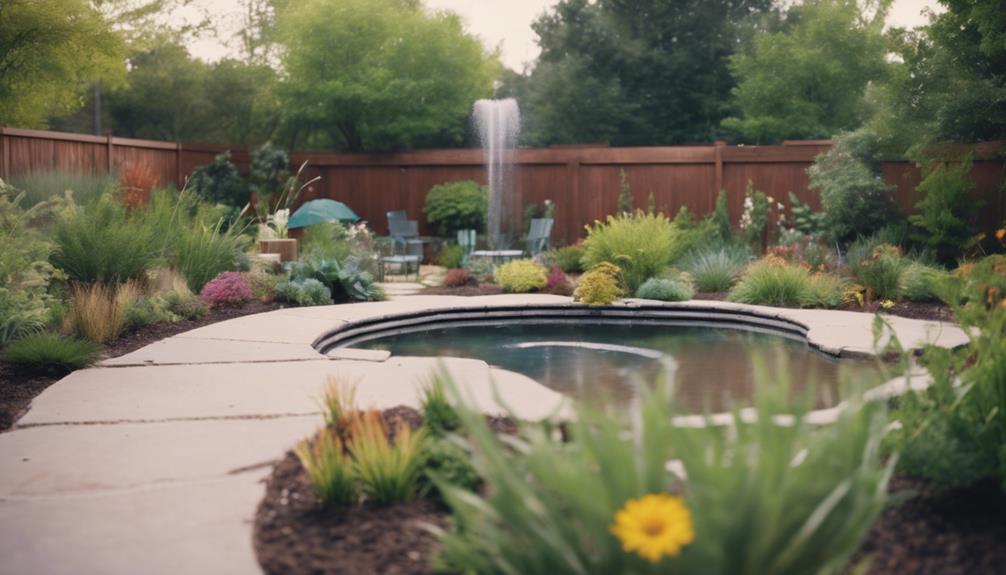
Incorporating native plants in your landscaping can greatly decrease water usage and support local wildlife, making it a sustainable and eco-friendly practice. By opting for native plants, you not only reduce the need for excessive watering but also provide a habitat for birds, insects, and other wildlife species unique to your area.
Another sustainable practice worth exploring is installing a rain garden. These gardens help capture and filter rainwater, preventing runoff and reducing water pollution. Utilizing a drip irrigation system is also a smart choice as it can save up to 30-50% more water compared to traditional sprinkler systems.
Additionally, choosing permeable paving materials can assist in reducing stormwater runoff and preventing soil erosion. Composting organic waste from your landscaping activities is another eco-friendly practice that enriches the soil, reduces landfill waste, and promotes a healthy ecosystem.
Budget-Friendly Tips for Outdoor Transformation

Looking to revamp your outdoor space without breaking the bank? Consider repurposing pool materials, choosing low-maintenance plants, and gradually updating landscaping features over time.
Cost-Effective Makeover Ideas
To achieve a budget-friendly outdoor transformation after removing a swimming pool, repurposing pool materials like decking can be a cost-effective option.
By incorporating low-maintenance plants into your landscape design, you can save on long-term maintenance expenses.
Consider starting DIY landscaping projects to cut down on labor costs and create a personalized outdoor space.
Make the most of your budget by shopping for plants in-season, which often leads to discounts and savings on landscaping expenses.
Additionally, opting for gradual landscaping updates allows you to spread out costs over time, making the transformation more manageable financially.
Simple Yard Enhancements
Consider repurposing pool materials like decking or tiles to save on landscaping costs when enhancing your yard on a budget. This eco-friendly approach not only reduces expenses but also adds a unique touch to your outdoor space. You could use these materials to create pathways, borders for flower beds, or even a small patio area. Additionally, incorporating low-maintenance plants and native species can help cut down on ongoing maintenance expenses, saving you time and money in the long run.
If you're looking to further enhance your yard, think about adding raised beds for a vegetable garden. This budget-friendly option not only provides fresh produce but also adds visual interest to your landscape.
Another idea is to install a patio for outdoor dining and relaxation. This space can be transformed into an outdoor kitchen area for entertaining guests or simply enjoying a meal alfresco. By gradually updating your yard with these simple enhancements, you can create a beautiful outdoor oasis without breaking the bank.
Contact us for more tips on how to elevate your outdoor space affordably.
Functional Outdoor Upgrades
Repurposing a removed swimming pool area can't only save on maintenance costs but also provide a blank canvas for functional outdoor upgrades that enhance your outdoor space affordably. Consider these budget-friendly tips for transforming your outdoor space:
- Create a Cozy Patio: Utilize repurposed pool materials like tiles or coping stones to build a charming patio area for relaxing or entertaining.
- Build a DIY Fire Pit: Gather some friends and family for a weekend project to construct a simple fire pit using inexpensive materials like bricks or concrete blocks.
- Plant a Sustainable Garden: Choose low-maintenance plants native to your area to create a vibrant and eco-friendly garden space that requires less water and upkeep.
- Install a Water Feature: Enhance the ambiance of your outdoor space by incorporating a small pond, fountain, or waterfall using recycled materials for a touch of tranquility.
Enhancing Aesthetics With Design Elements
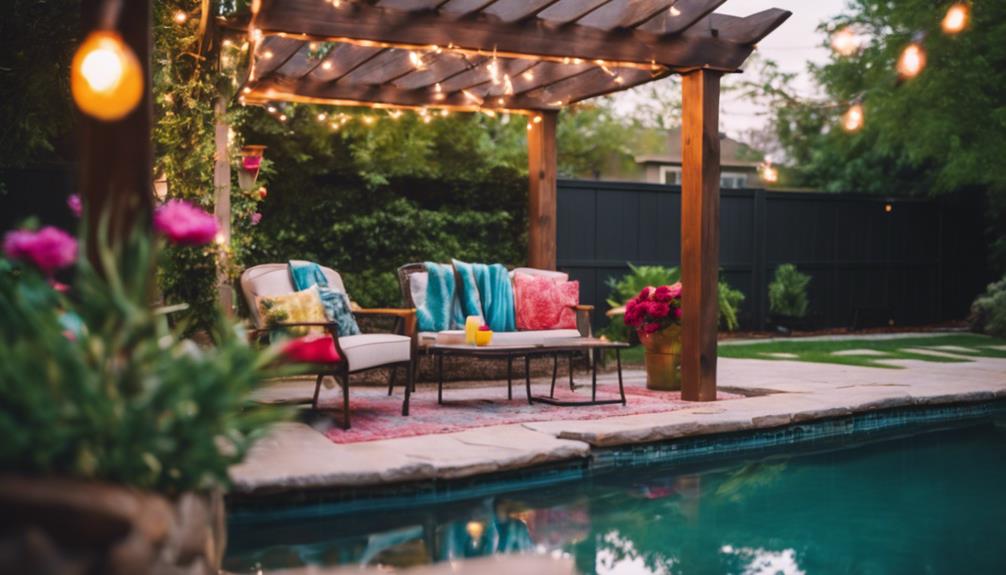
Enhance the visual appeal of your reclaimed outdoor space by incorporating a mix of plants, hardscaping, and water features. Integrate a variety of plants such as colorful flowers, shrubs, and trees to add vibrancy and texture to your landscape.
Consider incorporating hardscaping elements like pathways and seating areas to define different zones and create an inviting atmosphere for relaxation or entertainment. Adding water features like fountains or small ponds can introduce a sense of tranquility and visual interest to your outdoor space.
To further elevate the aesthetics, think about including design elements such as lighting fixtures, sculptures, or decorative accents that complement the overall theme of your landscape. Experiment with contrasting textures, heights, and colors to create a visually dynamic environment.
Remember to strike a balance between functionality and aesthetics to guarantee your post-pool removal landscape is both practical and visually appealing. By carefully planning and implementing these design elements, you can transform your outdoor space into a beautiful and inviting retreat.
Maximizing Property Value Through Landscaping

To maximize the value of your property post-pool removal, focus on strategic landscaping choices that can greatly enhance your home's appeal and marketability. Hiring a professional landscaper can make a significant difference in increasing your property value by up to 20%.
Here are some key landscaping strategies to help you achieve this:
- Create Functional Outdoor Living Spaces: Designing areas for entertaining, dining, or relaxation can add practicality and charm to your yard.
- Incorporate Diverse Plantings: Utilize a mix of trees, shrubs, flowers, and hardscaping elements to create visual interest and boost curb appeal.
- Install Sustainable Features: Consider adding eco-friendly elements like native plants, rain gardens, or permeable paving to attract environmentally conscious buyers.
- Focus on Low-Maintenance Design: Opt for landscaping that requires minimal upkeep to reduce maintenance costs and appeal to a wider range of potential buyers.
Frequently Asked Questions
How to Landscape After Removing a Pool?
To landscape after removing a pool, consider planting a garden for aesthetics. Build a patio or deck for outdoor living. Add a fire pit as a cozy gathering spot. Include a water feature for tranquility. Install a pergola for shade and retreat.
Does Removing Inground Pool Decrease Home Value?
Removing an inground pool doesn't necessarily decrease home value. It can actually increase value by creating more usable space, eliminating maintenance costs, and enhancing curb appeal. Buyers often prefer a landscaped yard over a pool.
What to Do After Taking Out an Above-Ground Pool?
After taking out an above-ground pool, level the ground and fill the hole with clean dirt. Plan new landscaping features like gardens or patios. Check local codes, test soil for chemicals, and consult a landscaper for advice on transforming the area.
What to Do With a Deck After the Pool Is Gone?
Once the pool is gone, transform the deck into a new outdoor oasis. Repurpose it for seating, dining, or a cozy fire pit. Consider repairs and upgrades for a fresh look. Let your deck be the star of your backyard!
How Can I Landscape My Yard After Removing a Swimming Pool to Create a Rustic Retreat?
After removing a swimming pool, consider turning your yard into a rustic retreat. Incorporate rustic farm swimming pool ideas like creating a natural pond, adding a cozy fire pit, and using reclaimed wood for furniture. Planting native plants and installing a gravel pathway can enhance the rustic vibe of your new outdoor space.
How Can I Reclaim My Space and Landscape After Repurposing a Swimming Pool?
Are you looking for repurposed swimming pool ideas to transform your space? After repurposing a swimming pool, you can consider creating a beautiful landscape with a mix of plants, trees, and decorative elements. Adding a cozy seating area or a small garden on the former pool area can give your space a new lease on life.
How Can I Reclaim My Outdoor Space After Removing an Above Ground Swimming Pool?
If you’re looking for above ground pool landscaping ideas after removing your swimming pool, consider creating a new outdoor oasis with a combination of pavers, plants, and seating areas. You can transform the space into a beautiful garden or a functional outdoor living area with the right design and decor.
Conclusion
As you transform your backyard after removing a swimming pool, remember that every change brings new opportunities.
Just like a caterpillar emerging from its cocoon, your outdoor space has the potential to blossom into something beautiful and unique.
By incorporating sustainable practices, functional elements, and design aesthetics, you can create a landscape that not only enhances your property value but also provides a tranquil haven for relaxation and enjoyment.
Embrace the transformation with open arms and watch your backyard flourish.



